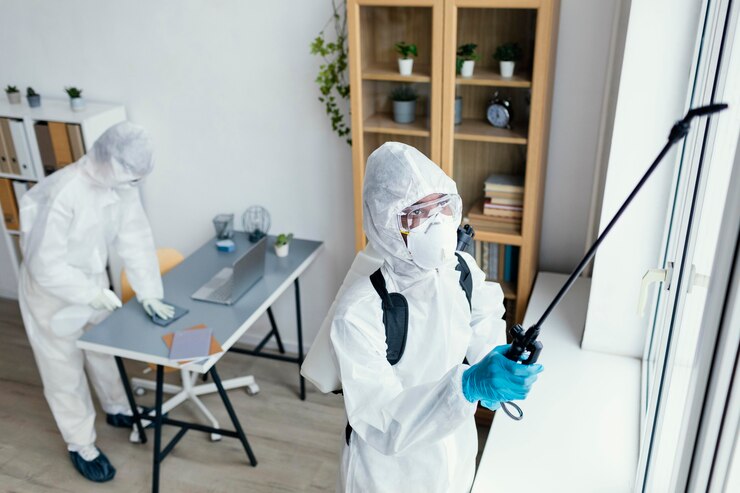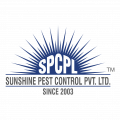
Dridged insect control solutions are notoriously troublesome to homeowners and, at times, business representatives due to the structural disadvantages they bring vis-a-vis reduced health threats. Insects can cause damage by gradually chewing food with disease-causing bacteria, along with wood to inflict inhumane torture on rodents like termites. Among another set of infamous public health pests, cockroaches are famous vectors, presenting health hazards to your family or workers. Other dangers being bedbugs that destroy sleep, irritate, and cause allergic reactions.
Ants intervene in the case of food storage. Preventive measures against pest control are necessary to reduce the infection and to secure homes and workspaces. Knowing how to identify, understand pest activity, and use control measures to mitigate chances and risks is important for homeowners. Fortunately for them, insect control options include chemical treatments, biological control methods, mechanical traps, and integrated pest management. An insect infestation will allow a pest control service to help in selecting a long-term solution. The article provides a platform with practical insect management approaches, their benefits, and preventive measures to keep insect-free your home and workplace environment.
Common Types of Pests
Every type of pest does a unique damage as all homes and businesses face them. Here are five types of pest which really love to invade homes and commercial places:
1.Termites : Usually, these pests are fully given to feed on wood and usually go unnoticed causing structural damage worth millions of dollars. These pests are highly moisture dependent and even go undetected when they destroy forewall.
2. Cockroaches : These pests are well known for their ability to spread bacteria and allergens that trigger asthma and other symptoms related to the respiratory airways. They prefer warm and humid areas such as kitchens and bathrooms, and sometimes also basements.
3.Rodents (Rats & Mice) : They are also the top notch destroyers of materials, chewing through electrical wires and insulation. They can also spread diseases, which can be very dangerous to health. They excel at leaving food resources contaminated and can multiply to alarming numbers within days, if not kept in check.
4. Ants : If they are small, they could really be major troublemakers, especially when they invade kitchens or other areas where food is stored. Some little species like the carpenter ants can also chew into wood, causing a great amount of damage structurally.
5 Mosquitoes :They are blood-sucking insects which were the cause of annoying humans but are more serious for life-threatening diseases like malaria, dengue, and now Zika virus infection. Mosquitoes breed in stagnant water; hence, proper management of these has to be performed to prevent these diseases.
Effective Pest Control Solutions
Most insect control approaches do not correspond to every situation because they require specific methods depending on the infection and level of environmental conditions. The correct insect control strategy with its related method depends on both infection and intensity of environmental conditions. Multiple proven insect control methods exist as the following:
1. Chemical pest control
The standard approach for insect management known as chemical insect control uses pesticides with pesticides to eliminate rodents to remove unwanted insects. The use of these effective treatments requires specialist handling as professionals ensure protection for all in your family including pets and (environment).
2. Organic pest control
Customers interested in sound methods environmentally will find their solution through biological insect control options. Pest population control strategy depends on natural predators with pathogens to achieve the result. The introduction of ladybugs in gardens serves as a biological insect control method that manages aphids but proves safe for other species. Additionally, specific bacterial solutions can damage mosquito larvae without affecting other living organisms.
3. Mechanical insect control
Physical barriers with mesh are effective tools that prevent insects from access and catch them after entering. Using rats’ mesh and fly screen and tightly serves as ways to prevent the entry points insect infiltration. The method does not use any chemicals, yet a small insect proves to be effective as a controller and preventive tool.
4. Integrated Pest Management (IPM)
An integrated pest management program should seek a combination of pest management and not dependence on one line of action. The improvements made to sanitation must be accompanied by environmental changes that can further deter pest entry and strategic chemical applications limited to the areas where required. Sustainable pest management practices can aim at perpetual pest management that would not cause adverse effects on the environment.
Tips for Preventing Pest Infestations
Prevention of insect infection is an easy process and is a cheaper way compared to fighting insect infections. The mystery is uncomfortable as a place possible for pests by eradicating food, moisture and hiding places to your home or business. The first line of defense is that all cleaning will reduce the chances of cleaning, creating dishes and widely sweeping pests. Ensure that foods are always stored in airtight jars, and dirty dishes should never be left from soaking in the sink overnight; In addition to ants, cockroaches, first consider these legs.
Food settlement by collecting residual waste in sealed compartments can hardly be opened by rodents and flies. Moisture is another factor that draws into insects Therefore, repair all leaks, open all drains, and prevent the water from collecting the plant in trays, sinks or other areas. Seal your home against the entry, by checking it for cracks, gaps in doors and window frames, or for any torn screen, allowing them an open invitation to enter your house.
If you maintain a garden, keep it free from overgrowth plants and debris, and prevent stable water from accumulating on the site. Insect infections are cleaned, dry and well -organized to reduce potential hiding places on infection attacks, check storage areas such as regular attic, basement and garages to ensure that. Finally, do not forget to book an insect control and treatment on a regular basis to help you manage and prevent infections before becoming a serious problem. By examining these preventive mechanisms, you must be creating a setting that a cleaner, healthy and comfortable environment means that there is a cleaner, healthy and comfortable environment for you.
FAQ About Pest Control Solutions
1. How many times should I have pest control?
How often, it really depends on how badly your house is infected. Pest control is usually advised every three to four months; However, some infections are very time-sensitive and call for frequent treatment in commercial buildings.
2. Is pest control safe for pets and children?
Professional insect control, chemicals are safe and controlled by relevant acts, mainly the Federal Environmental Protection Act. Make sure you follow all instructions on the label, and keep pets and children away from treated areas.
3. Can I control my own?
Sure; If this is for minor infections, then “you can”. For severe infections, a professional should be called to erase the insects.
4. How do I control a termites infection?
Preventive measures include regular inspection, keeping things drought and treating wood for termites.
5. Do natural insect control treatments work?
Natural insect control treatments such as essential oils and diocecous earth can help help, but they are not enough passes compared to professional people.


